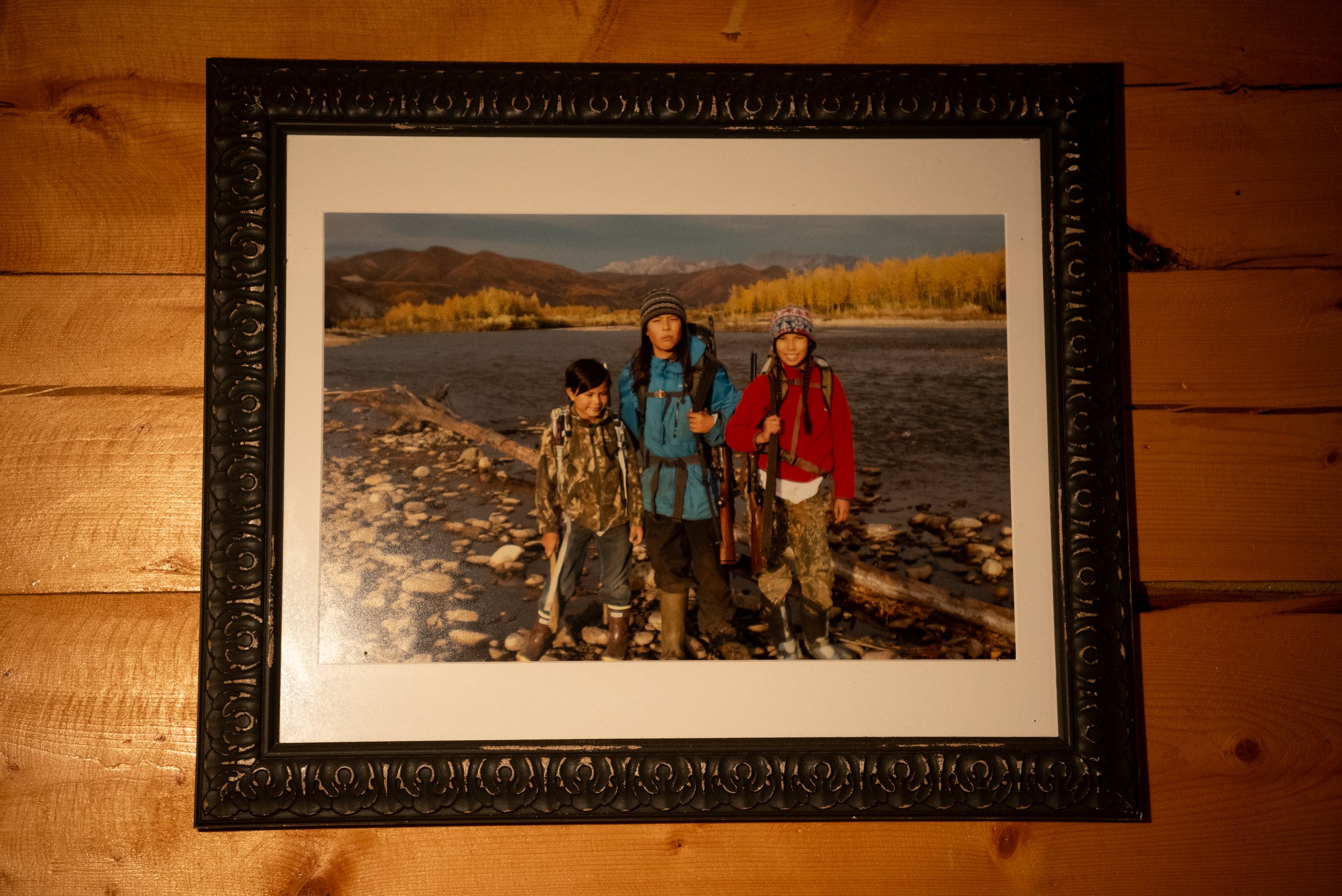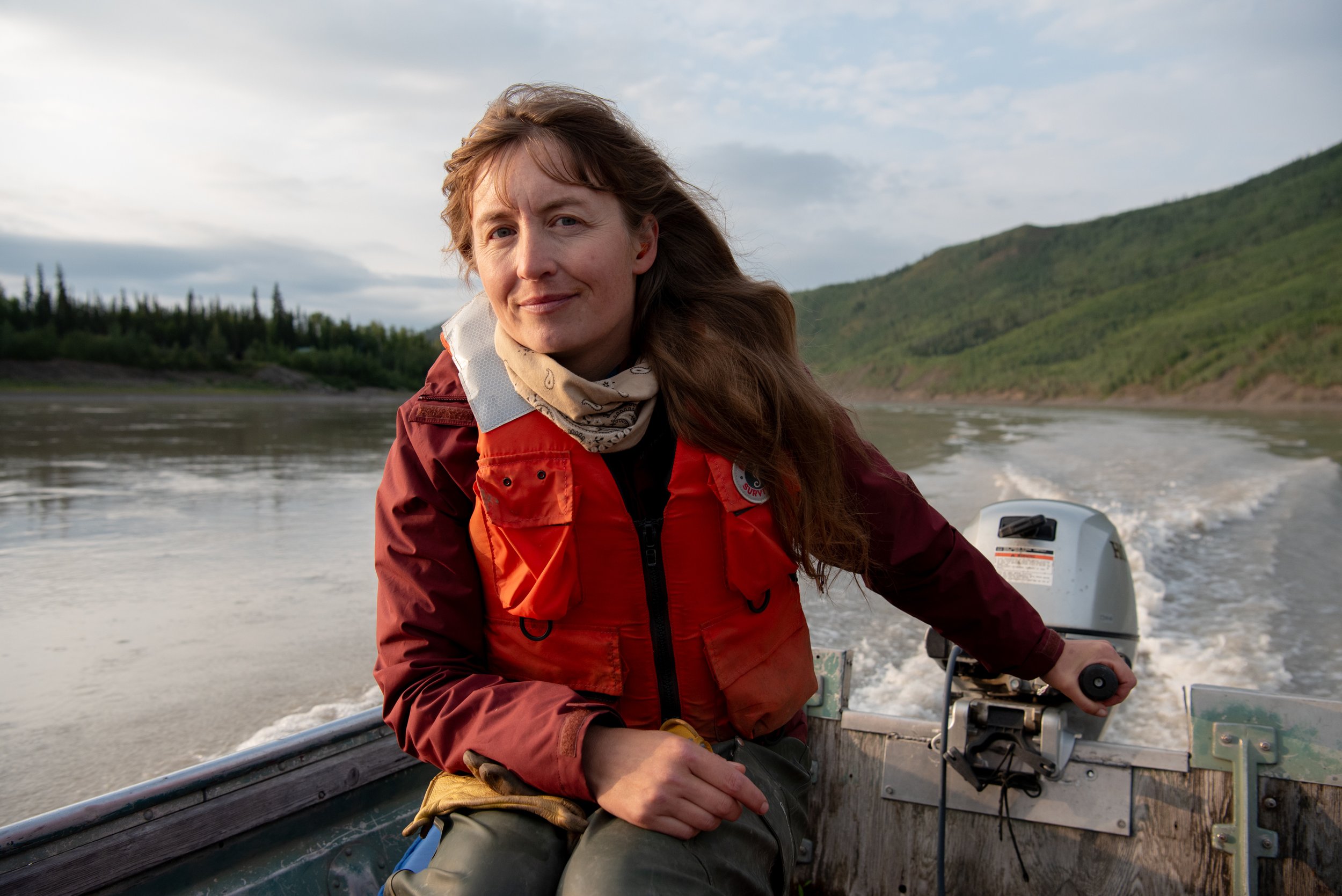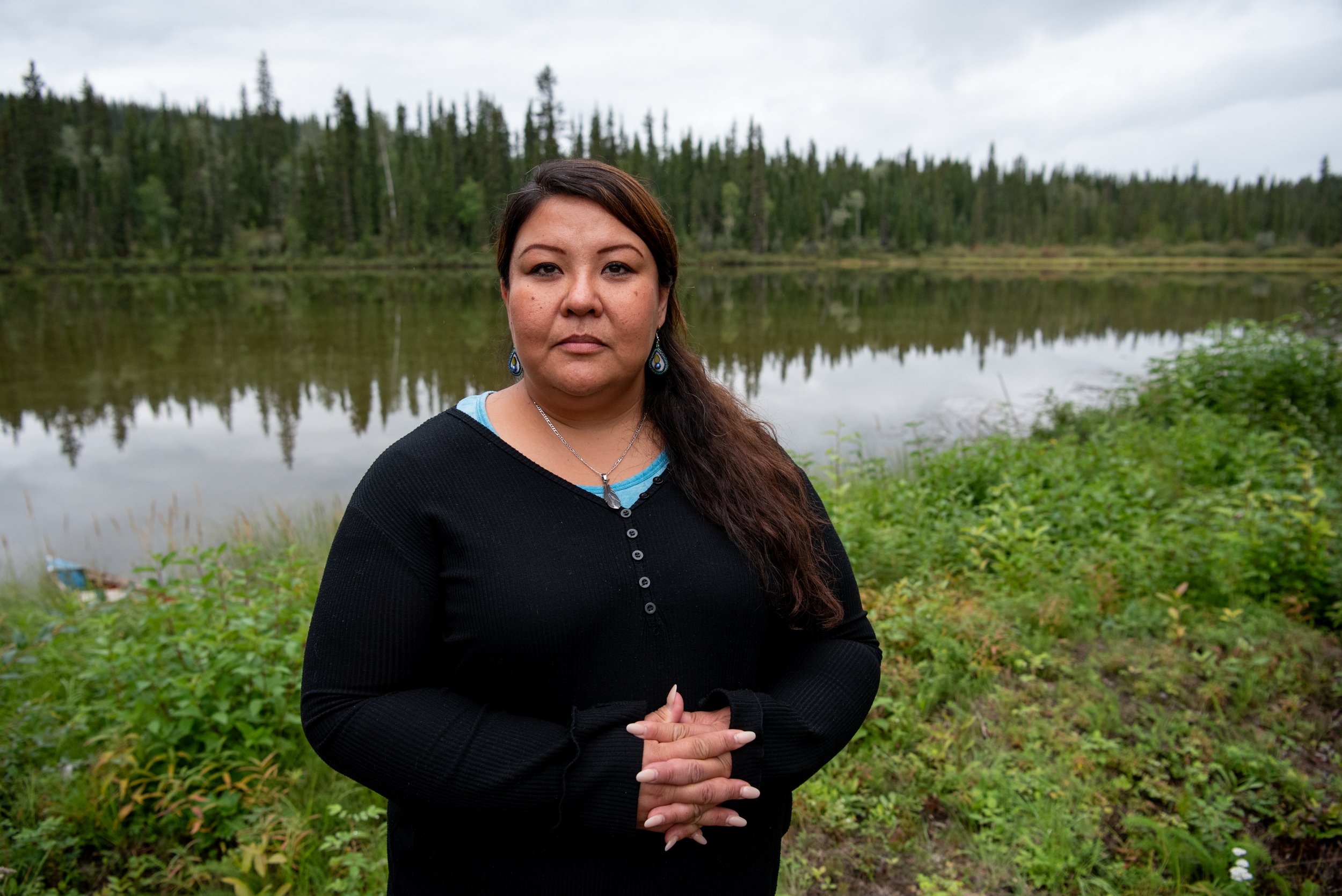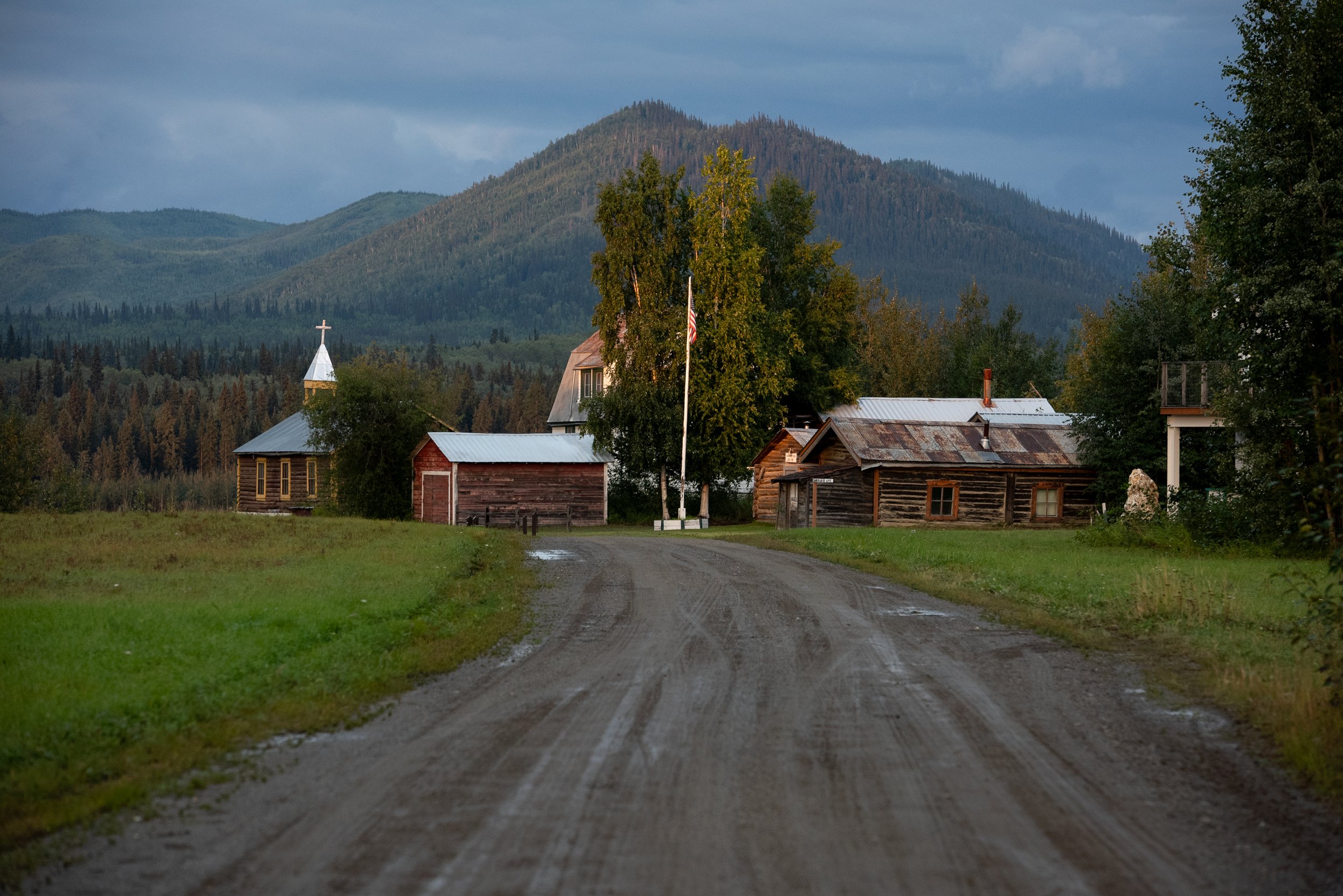There’s a crisis in the Yukon River
Salmon populations are at record lows,
upending a way of life for Alaskans
Photos and reporting for The Washington Post
Text by Dino Grandoni


When Jody Potts-Joseph was growing up, her family mushed sled dogs during the harsh Alaskan winters to hunt and trap, feeding them salmon caught from the Yukon River by the thousands.
But after rebuilding her sled dog team as an adult, Potts-Joseph, a member of the Han Gwich’in tribe, had to turn to store-bought dog food. The river that was once renowned for its salmon doesn’t have enough to offer anymore.
Flowing from British Columbia through Alaska to the Bering Sea, the nearly 2,000-mile-long Yukon River used to teem with Chinook and chum salmon, sustaining a culture of harvesting fish to feed both Alaskans as well as sled dog teams vital for transportation during the winter.
Now those salmon runs have turned into to a trickle, as climate change and other factors weigh against the fish. The result is a drastic cut to local food supplies in a region where store-bought food, shipped in from thousands of miles away, is expensive.
“Alaska is a canary in the coal mine,” said Andy Bassich, a homesteader and dog musher at Calico Bluff only a few miles from the Canadian border. “What’s happening up here is only going to happen in the Lower 48 farther down the line.”

A fish wheel, used to scoop salmon out of the river to harvest them, sits unused.

Sonja Sager, an Eagle resident born and raised in the town, was raised to live a subsistence lifestyle.
There are two main species of salmon to fish in the Yukon. The first is chum or dog salmon, which is traditionally fed to canines here but still eaten by people. The other is Chinook or king salmon, the larger and fatter variety that people eat in Alaska and around the world.
“This is food that my family and our ancestors have used for millennia,” said Karma Ulvi, chief of the Eagle Tribal Council. “For thousands of years, we’ve fished on these rivers and our people lived here and we took only what we needed.”
Both varieties are vanishing. Compared to about the last three decades, the Yukon’s chum populations declined by around 80 percent in the period between 2020 and 2022, according to the Alaska Department of Fish and Game. Chinook salmon numbers, meanwhile, dropped by nearly two-thirds during the same time.

Andy Bassich holds a photograph from the 1970's of a large salmon caught on the Teslin River in Canada, a tributary of the Yukon River.

Sled dogs at the home of Andy Bassich.

Eagle Village Tribal Council Chief Karma Ulvi, who serves on many boards to help create solutions to bring back the salmon population. “It’s to fight for our way of life, basically."
Lost with the decline in the Yukon’s salmon is more than just a food source. For now, people living here cannot connect with family at fish camp and share knowledge about how to catch and prepare salmon.
“We’re watching our way of life slipping away,” Sager said.
For Potts-Joseph, supermarket food just isn’t as healthy for Indigenous people like her. “The food that we get from the land, it works the best with our DNA,” she said. “And it’s something our people have eaten and lived off for for thousands of years.”




